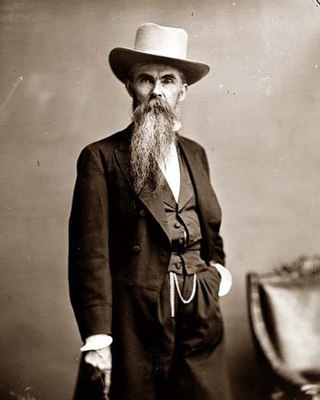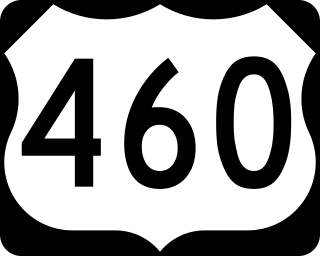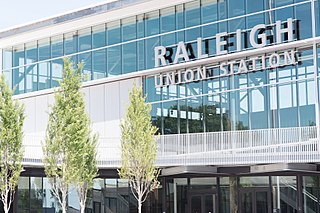
Portsmouth is an independent city in southeast Virginia, United States. It lies across the Elizabeth River from Norfolk. As of the 2020 census, the population was 97,915. It's the 9th-most populous city in Virginia and is part of the Hampton Roads metropolitan area.

Suffolk is an independent city in Virginia, United States. As of the 2020 census, the population was 94,324. It is the 10th-most populous city in Virginia, the largest city in Virginia by boundary land area as well as the 14th-largest in the country.

The Norfolk and Western Railway, commonly called the N&W, was a US class I railroad, formed by more than 200 railroad mergers between 1838 and 1982. It was headquartered in Roanoke, Virginia, for most of its existence. Its motto was "Precision Transportation"; it had a variety of nicknames, including "King Coal" and "British Railway of America". In 1986, N&W merged with Southern Railway to form today’s Norfolk Southern Railway.

The Seaboard Air Line Railroad, which styled itself as "The Route of Courteous Service", was an American railroad which existed from April 14, 1900, until July 1, 1967, when it merged with the Atlantic Coast Line Railroad, its longtime rival, to form the Seaboard Coast Line Railroad. Predecessor railroads dated from the 1830s and reorganized extensively to rebuild after the American Civil War. The company was headquartered in Norfolk, Virginia, until 1958, when its main offices were relocated to Richmond, Virginia. The Seaboard Air Line Railway Building in Norfolk's historic Freemason District still stands and has been converted into apartments.

William Mahone was an American civil engineer, railroad executive, Confederate States Army general, and Virginia politician.
Walter Gwynn was an American civil engineer and soldier who became a Virginia Provisional Army general and North Carolina militia brigadier general in the early days of the American Civil War in 1861 and subsequently a Confederate States Army colonel. He was a railroad engineer and railroad president before the Civil War, Florida Comptroller in 1863 and a civil engineer after the Civil War.

The Norfolk and Petersburg Railroad was built between Norfolk and Petersburg, Virginia and was completed by 1858. The line was 85 miles (137 km) of 5 ft track gauge.

The Southeast Corridor (SEC) is a proposed passenger rail transportation project in the Mid-Atlantic and Southeastern United States to extend high-speed passenger rail services from Washington, D.C. south through Richmond, Petersburg with a spur to Norfolk in Virginia through Raleigh, Durham, Greensboro and south to Charlotte in North Carolina and connect with the existing high-speed rail corridor from D.C. to Boston, Massachusetts known as the Northeast Corridor. Since first established in 1992, the U.S. Department of Transportation (USDOT) has extended the corridor to Atlanta, Georgia and Macon, Georgia; Greenville, South Carolina; Columbia, South Carolina; Jacksonville, Florida; and Birmingham, Alabama.

Transportation in the Commonwealth of Virginia is by land, sea and air. Virginia's extensive network of highways and railroads were developed and built over a period almost 400 years, beginning almost immediately after the founding of Jamestown in 1607, and often incorporating old established trails of the Native Americans.
The Wilmington and Weldon Railroad (W&W) name began use in 1855, having been originally chartered as the Wilmington and Raleigh Railroad in 1834. When it opened in 1840, the line was the longest railroad in the world with 161.5 miles (259.9 km) of track. It was constructed in 4 ft 8 in gauge. At its terminus in Weldon, North Carolina, it connected with the Seaboard and Roanoke Railroad and the Petersburg Railroad. The railroad also gave rise to the city of Goldsboro, North Carolina, the midpoint of the W&W RR and the railroad intersection with the North Carolina Railroad.
The Petersburg Railroad ran from Petersburg, Virginia, south to Garysburg, North Carolina, from which it ran to Weldon via trackage rights over the Seaboard and Roanoke Railroad.

U.S. Route 460 (US 460) in Virginia runs west-east through the southern part of the Commonwealth. The road has two separate pieces in Virginia, joined by a relatively short section in West Virginia. Most of US 460 is a four-lane divided highway and is a major artery in the southern third of the state. From Petersburg to Suffolk, US 460 is a four-lane non-divided highway. It is a popular alternative to Interstate 64 (I-64) when going from Richmond and other points in central Virginia to the Currituck Sound and Outer Banks of North Carolina, avoiding the congestion and tunnels of the more northerly I-64 corridor. The road passes through several small towns that built up at stops along the railroad line.

Raleigh Union Station is an intermodal transit station in Raleigh, North Carolina, United States. Train service began the morning of July 10, 2018. Its main building serves as an Amtrak train station, while a future adjacent building will serve as the bus terminus for GoTriangle. The station is located at the Boylan Wye, a railroad junction used by CSX and Norfolk Southern, and adjacent to the Depot Historic District in downtown Raleigh.
The Raleigh and Gaston Railroad was a Raleigh, North Carolina, based railroad opened in April 1840 between Raleigh and the town of Gaston, North Carolina, on the Roanoke River. It was North Carolina's second railroad. The length was 100 miles (160 km) and built with 4 ft 8 in gauge. Part of the Raleigh and Gaston's tracks remains in service today as part of CSX's S Line as the Norlina Subdivision of CSX's Florence Division.

Norfolk Terminal Station was a railroad union station located in Norfolk, Virginia, which served passenger trains and provided offices for the Norfolk and Western Railway, the original Norfolk Southern Railway and the Virginian Railway. The N&W, Norfolk Southern, and Virginian's Norfolk terminal location stood in contrast to competitor railroads, such as the Chesapeake & Ohio Railroad, Southern Railway, Atlantic Coast Line Railroad, Pennsylvania Railroad and Seaboard Air Line Railroad which operated out of Cape Charles (Virginia), Newport News and Portsmouth, terminals outside of Norfolk. Customers took ferries or, later in the 20th century, buses from Norfolk to reach those other terminals. The terminal was located at 1200 East Main Street in Norfolk, near today's Harbor Park baseball stadium.
The Norlina Subdivision is a railroad line owned by CSX Transportation in the U.S. State of North Carolina. The line currently runs from Norlina, North Carolina, to Raleigh, North Carolina, for a total of 51.2 miles. At its north end the line comes to an end and at its south end the line continues north from the Aberdeen Subdivision. While the current line dates back to 1840, it has been known as the Norlina Subdivision since the 1970s. Under CSX's predecessor, the Seaboard Coast Line Railroad, the Norlina Subdivision continued north to Collier Yard near Petersburg, Virginia.
The Portsmouth Subdivision is a railroad line owned by CSX Transportation in Virginia and North Carolina. The line connects CSX's network with the port city of Portsmouth, Virginia. The Portsmouth Subdivision was historically operated by the Seaboard Air Line Railroad, a CSX predecessor.
The Richmond, Petersburg and Carolina Railroad was a railroad built in the early 1900s. As its name suggests, it ran from Richmond, Virginia south through Petersburg into northern North Carolina. It was a key part of the network of the Seaboard Air Line Railroad.














